All teas (i.e. black, green, oolong, white and pu erh tea) come from the Camellia Sinensis plant. This “plant” can range from a small, carefully pruned and cultivated tea garden up to a huge ancient tea tree growing wild on the mountain slopes of Yunnan. The Camellia Sinensis plant is an extremely versatile plant. There are over 1,500 different strains or cultivars that have been developed. The main black tea growing regions are India, China, Sri Lanka, Kenya. Other regions such as Thailand, Vietnam, Indonesia, Argentina and even Australia and the US are also now growing and harvesting tea. The most common un-blended black teas are Assam, Darjeeling, Keemun, Lapsang Southong and Yunnan Gold tip.
What is Black Tea and How is Black Tea Made
Black tea (or Red tea is the name used in most Asian cultures) is a broad term for any tea from the Camellia Sinensis pant that has been fully oxidized. It can be in the form of naturally processed uncut (orthodox) tea or finely cut into small particles (CTC) or many varieties in between according to the specific processing methods used. There are also many different blended and flavored black teas available – some of the more common are Earl Grey, English Breakfast and Masala Chai and flavors such as Mango black, Cinnamon black, Blueberry black etc
Black Tea Making Techniques
The basic process for making black tea after harvesting the leaves from the tea plant involves withering, rolling, oxidizing and drying. The finished product (unless more finely cut) is usually a strip shape.
Withering: The withering (or wilting) process allows excess water to be removed from the leaves and initiates the oxidation process. It is often done outdoors in the sun or can be done indoors on large bamboos trays.
Rolling: The main purpose of the rolling and tumbling process is to bruise and somewhat break up the leaf to enable it to be more fully exposed to oxygen for the oxidazion process to be more effective. This also starts to form the basis of the tea’s character.and shape. For teas that are processed by the CTC method (Crushing, Tearing, Curling) this is usually done at this time.
Oxidization: The withered and rolled tea leaves are then spread out in a humid environment and exposed to oxygen. This causes the leaves to start turning from a green to a reddish brown color. This oxidation process is the most important time for the tea to develop its unique taste and flavor.
Drying (or Firing): This is the final stage in making black tea. It is commonly done by baking in hot ovens or frying in hot woks. Tea makers need to be careful not to over cook the tea leaves. Many of the teas unique flavor and taste nuances are developed in this final firing stage. For example the famous smokey lapsang souchong black tea is made by drying the leaves over pine fires at this stage.
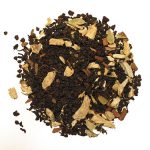
Masala Chai black tea with bay leaves, cinnamon, ginger, cardamon, fennel, anise, cloves, black pepper
Grading Black Teas
There is a somewhat complicated terminology used for grading black teas in different regions, which i will touch on briefly here, as you will probably come across it and wonder what in the world it means. These grading terms are used mainly in the India, Sri lanka, Kenya and Indonesian tea growing regions and not usually for Chinese or Taiwanese black teas
Full Leaf Teas
- OP (Orange pekoe) Standard grade – Made from the top two leaves as pekoe and orange pekoe
- FOP (Flowery Orange Pekoe) Composed of the terminal bud (tip) and the top two leaves
- GFOP (Golden Flowery Orange Pekoe) FOP with golden tips
- TGFOP (Tippy Golden Flowery Orange Pekoe) FOP with a high proportion of golden tips
- FTGFOP (Finest Tippy Golden Flowery Orange Pekoe) FOP of outstanding quality
- STGFOP (Special Finest Tippy Golden Flowery Orange Pekoe) The very best FOP
Sometimes an ‘1’ added to the end will indicate the finest quality within that grade, i.e. FTGFOP1.
Broken Leaf Teas
- BOP (Broken Orange Pekoe)
- FBOP (Flowery Broken Orange Pekoe)
- GBOP (Golden Broken Orange Pekoe)
- TGBOP (Tippy Golden Broken Orange Pekoe)
- GFBOP (Golden Flowery Broken Orange Pekoe)
Included under the broken leaf category are FANNINGS, which is made of extremely fine leaf pieces and makes a very brisk breakfast-style tea, and DUST, a lower grade which is used exclusively for tea bags.
Black Tea Consumption
In most western cultures, black tea is the most common and popular tea consumed. For examples recent estimates in the US indicate that black tea accounts for about 85% of all tea purchased. Most of this is in the form of ready to drink sweetened iced tea. Most hot teas in the US and the UK are still made with tea bags, although there is a small growing trend towards higher grade, loose leaf teas. Black teas in Western cultures are traditionally made with the option of milk and sugar and some teas are specifically processed with this in mind. Some blends of Earl Grey and English Breakfast for example are made to be brewed up as quite strong flavored teas and to be drank with added milk and/or sugar. Higher grade, specialty black teas however are not harvested and processed with this in mind, but instead, as with all great teas, the aim is to produce a tea with a very unique taste and flavor profile that can be enjoyed and appreciated on its own. Adding milk and sugar to a high grade black tea such as an expensive Chinese Keemun or a Taiwanese Hong Cha would be like adding Coca cola to an expensive Bordeax wine (which apparently some Chinese did when they were first introduced to fine wines 🙂 ).
Brewing Black Tea
Aside from Masala Chai (which in the traditional Indian style is often made by boiling water, milk and the dry ingredients all together), most black teas are best brewed using water close to boiling. As a general brewing time guideline for black teas – full leaf teas can be steeped for 3-4 minutes and broken leaf, or CTC teas can be steeped for 2-3 minutes. Follow the steeping instructions on the packet if there are any – especially if a high grade tea
Good Tips for Tea Brewing
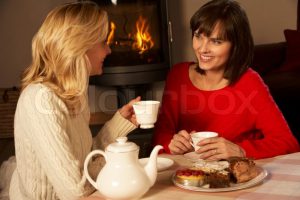 Use fresh cold water and bring to boil
Use fresh cold water and bring to boil- Don’t over boil the water – a gentle boiling is sufficient
- Pre-warm/rinse the tea pot and cups by pouring hot water into the pot and cups
- Measure out the correct amount of tea
- Use a variable temperature water kettle if possible to get the temperature accurate for the tea type
- Use a timer to measure the steeping time
- Use a tea strainer if the tea pot/tea infuser does not have one built in
- Once the tea is steeped, pour all the tea out of the pot – into cups and a holding pitcher, rather than letting it become over steeped
- High grade teas can be re-steeped
How do you like your black tea?
If you are looking for some suggested stores to buy good teas online you can find some listed in this article.

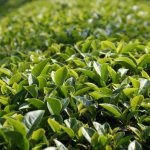


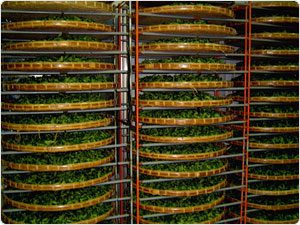

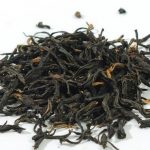
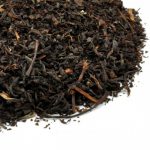



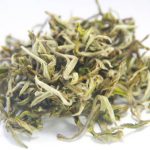
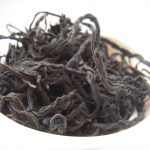
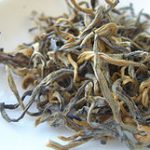

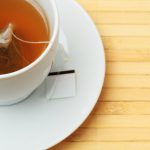

I love black tea, plain, no milk no sugar, but I am an Ice Teas person. I use English Breakfast Tea, decaf, because I cannot have caffeine, so I have a hard time finding loose black tea that is decaf. What loose tea, that is a black tea and decaf, would you recommend? I like a strong tea flavor.
Really great site. I had no idea how tea was made, very informative.
Gina
Hi Gina, Glad to hear you enjoy iced black teas. Yes, you are right, there are not a lot of loose leave teas available that have been decaffeinated – most decaf teas are sold in tea bags. American tea Room is one place that you can get a good Organic English Breakfast loose leaf tea. They also have a similar quality loose leaf Organic decaf Earl Grey